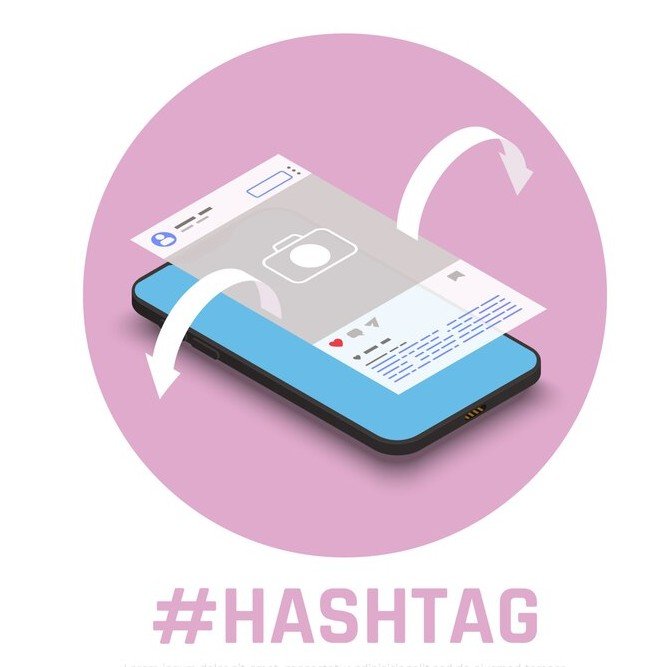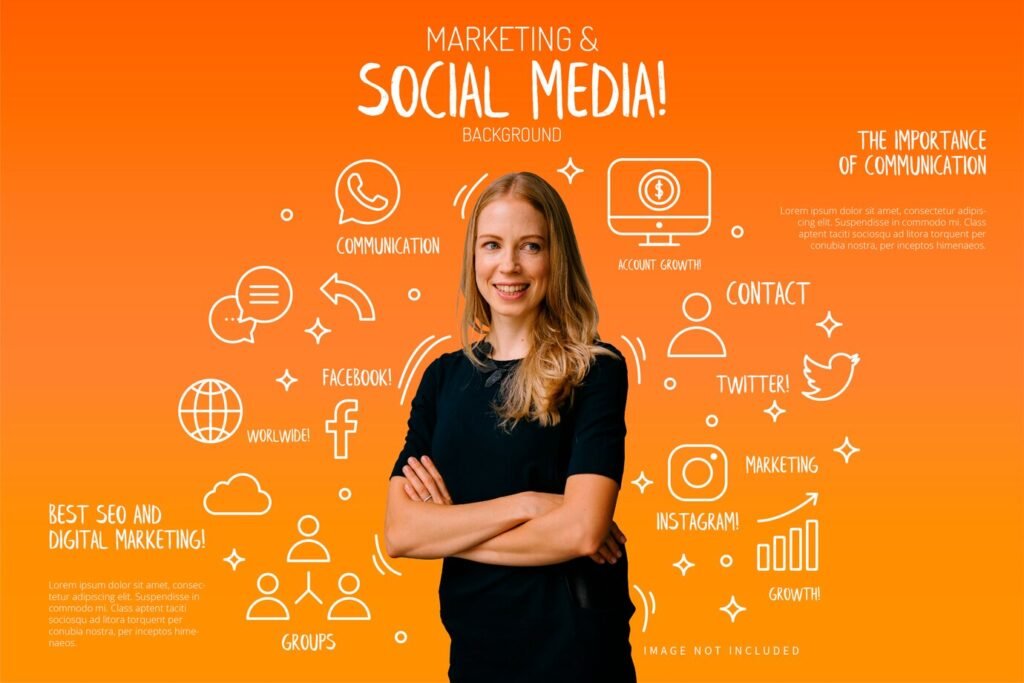Social Media 101: Decoding the Digital Landscape for Business Growth

Introduction: The Untapped Power of Connection (and What’s Holding You Back)
Imagine a small bakery that recently started posting pictures of its cakes on Instagram, hoping to attract more customers. The owner expects immediate results, but after weeks of posting, engagement remains low. Frustrated, they wonder: “Is social media really worth the effort?”
This scenario is common among businesses venturing into social media without a clear strategy. While social media offers immense potential for brand growth, customer engagement, and sales, many business owners struggle to harness its power effectively. It’s not just about posting—it’s about strategic connection.
In this guide, we’ll navigate the essentials of social media for business growth, clearing misconceptions, understanding different platforms, and crafting a strategy that truly works.
Why Social Media is Important

Social media isn’t just for memes and viral trends—it’s a game-changing tool for businesses. Whether you’re building a brand, engaging with customers, or driving sales, social platforms offer unmatched opportunities. Here’s why they matter more than you think:
1. Brand Authority & Trust
A consistent and engaging social media presence makes your brand recognizable and credible. It’s not just about posting—it’s about creating a brand voice, sharing valuable insights, and showing up regularly. Consumers trust businesses that are active and responsive online.
2. Direct Customer Engagement
Social media breaks down barriers between brands and customers. Quick responses to queries, active conversations, and addressing feedback in real-time build stronger relationships and customer loyalty. Engaged audiences are more likely to convert into loyal customers.
3. Sales & Lead Generation
Platforms like Instagram, Facebook, and Pinterest enable direct purchases, while LinkedIn is a powerhouse for B2B networking. Strategic content, from compelling product showcases to insightful thought leadership, can guide potential customers through the buying journey.
4. Market Research & Competitive Advantage
Social platforms provide a wealth of data—engagement metrics, audience behavior, and competitor strategies. Tracking trends and analyzing user interactions help refine marketing efforts, improve products, and stay ahead of the competition.
5. Consumer Buying Behavior
Studies show that 54% of social media users research products before making a purchase. A strong, well-maintained social presence ensures that when potential customers search, they find a brand that’s credible, engaging, and ready to meet their needs.
In short, social media isn’t optional—it’s a critical part of modern business success. Whether you’re building trust, generating leads, or staying ahead of trends, the right social strategy can drive real growth.
What are the Misconceptions of Social Media?
Many business owners enter social media with preconceived notions, which often hinder their success. Let’s debunk some of the most common myths:

- “Social media is just for teenagers.” While platforms like TikTok and Snapchat cater to younger audiences, LinkedIn, Facebook, and Instagram have vast user bases across all age groups.
- “Instagram is the only platform that matters.” Each social media platform serves a unique purpose. Twitter is great for real-time engagement, LinkedIn for B2B networking, and Facebook for community building.
- “Social media is free marketing.” While organic reach is valuable, effective social media requires time, consistency, and often, a budget for advertising to maximize reach and engagement.
- “Posting frequently is enough.” Without strategy and audience understanding, frequent posting may not translate into engagement or conversions.
Understanding these misconceptions allows businesses to approach social media with realistic expectations and a solid plan.
Different Social Media Posts (Crafting the Right Message for Each Platform)


Each social media platform thrives on different content formats. Let’s break them down:
Instagram:
Visual Storytelling Reigns Supreme
- Posts (Images/Videos): High-quality visuals of products, behind-the-scenes shots, and customer stories. Example: A clothing brand showcasing a new collection.
- Carousels: Multiple images or videos in a single post. Example: A fitness coach sharing a step-by-step workout routine.
- Reels: Short, engaging videos ideal for tutorials, product demos, and trending challenges. Example: A bakery demonstrating a cake-making process.
- Stories & Highlights: Temporary updates that keep engagement high. Example: A bookstore using Stories to promote a flash sale.
- Live Streams: Real-time interaction for Q&As, launches, or events. Example: A musician hosting a live concert.
Facebook:
Connecting with Community
- Text & Link Posts: Announcements, blog shares, and customer testimonials.
- Images & Videos: Engaging visuals, infographics, and brand stories.
- Live & Stories: Instant engagement tools to interact with the audience.
Twitter:
The Hub for Real-Time Conversations
- Tweets: Short updates, news, and industry insights.
- Threads: Deep-dive explanations on complex topics.
- Polls: Audience interaction to gather insights.
LinkedIn:
Professional Networking and Thought Leadership
- Articles & Documents: Thought leadership pieces and case studies.
- Text & Image Posts: Industry updates and company milestones.
- Polls & Engagement Posts: Professional discussions and audience insights.
YouTube:
The King of Long-Form Video
- Long-Form Videos: Tutorials, interviews, and deep-dive industry insights.
- Shorts: Bite-sized videos for quick engagement.
- Live Streams: Webinars, Q&As, and behind-the-scenes content.
What is the Algorithm? (Decoding the Mystery)

Every platform operates on an algorithm designed to prioritize engaging content. While algorithms change frequently, some key principles remain:
- Engagement matters: Likes, comments, shares, and saves impact post reach.
- Consistency is key: Regular posting improves visibility.
- Quality over quantity: Engaging, valuable content outperforms frequent, low-quality posts.
- Platform-specific strategies: Tailoring content to each platform’s algorithm increases organic reach.
Organic vs. Ads: The Balancing Act
Finding the right balance between organic content and paid advertising is crucial for social media success. While organic content helps build relationships and establish trust, paid ads accelerate reach and drive conversions. A well-rounded strategy leverages both to create a sustainable growth model.
Organic Content: Building Trust & Engagement
Organic content is the backbone of any brand’s social media presence. It allows businesses to connect with their audience authentically, fostering loyalty over time. Unlike ads, organic posts rely on engagement, shares, and interactions to reach more people.
Key Benefits:
- Builds credibility and trust with an engaged community.
- Encourages conversations, user participation, and brand advocacy.
- Enhances SEO and brand discoverability.
- Provides long-term value without direct ad spend.
To make the most of organic content, brands should post consistently, interact with their audience, use trending formats like Reels and Stories, and encourage user-generated content (UGC). The key is to offer valuable, entertaining, or informative content that resonates with followers.


Paid Advertising: Accelerating Growth & Conversions
While organic reach is valuable, it is often limited by platform algorithms. Paid advertising allows brands to cut through the noise and target specific audiences, ensuring their message reaches the right people at the right time.
Key Benefits:
- Delivers immediate reach and brand awareness.
- Allows precise audience targeting based on demographics and behavior.
- Increases website traffic, lead generation, and conversions.
- Provides data-driven insights for campaign optimization.
To get the best results from paid ads, businesses should start with small test campaigns, refine targeting based on data, use retargeting to re-engage past visitors, and ensure landing pages are optimized for conversions.
The Hybrid Strategy: Best of Both Worlds
A combined approach is the most effective way to scale social media success. Organic content nurtures relationships and builds credibility, while paid ads amplify reach and accelerate business goals.
How to Implement a Hybrid Strategy:
- Use organic content to engage your audience and identify high-performing posts.
- Promote top organic posts as paid ads to extend their reach.
- Retarget engaged users with specific offers or lead-generation campaigns.
- Monitor analytics and adjust strategies for continuous improvement.
A well-balanced social media strategy doesn’t rely solely on organic content or paid ads but instead integrates both. By using organic engagement to establish trust and paid ads to enhance visibility, brands can achieve sustainable growth and long-term success.
The Ultimate Social Media Plan: A Roadmap to Success

Social media isn’t just about posting—it’s about purpose. Whether you’re a small business owner, a startup, or a corporate brand, a clear strategy ensures your efforts translate into results.
1. Set Clear Goals (Why Are You Here?)
Before hitting “post,” define what success looks like for you:
- Brand Awareness – Grow your reach and recognition
- Website Traffic – Drive visitors to your site
- Lead Generation – Attract potential customers
- Sales Boost – Convert followers into buyers
- Customer Support – Strengthen relationships and trust
Each goal requires a tailored approach. Brand awareness thrives on engaging content, while lead generation benefits from value-driven offers.
2. Know Your Audience (Speak Their Language)
The better you understand your audience, the more your content resonates. Ask yourself:
- Who are they? (Demographics)
- What do they care about? (Interests & Pain Points)
- Where do they spend time online? (Platforms & Behavior)
For example, a B2B audience on LinkedIn values thought leadership, while a Gen Z audience on TikTok prefers quick, relatable videos.
3. Content Strategy: The Heart of Social Media
Content isn’t just king—it’s the whole kingdom. Your strategy should include:
- Content Pillars – Recurring themes such as product highlights, customer stories, and educational posts
- Content Calendar – A plan to stay consistent and strategic
- Engagement Focus – More conversations, less broadcasting
A good rule of thumb is to keep 80% of your content valuable and engaging, while only 20% should be promotional.
Conclusion: Taking the Next Step
Social media is a powerful tool, but success requires strategy, consistency, and adaptation. Businesses that invest in a structured approach will see long-term growth, engagement, and ultimately, increased revenue. Whether you’re starting fresh or refining your strategy, the key is to stay authentic, analyze performance, and evolve with the digital landscape.